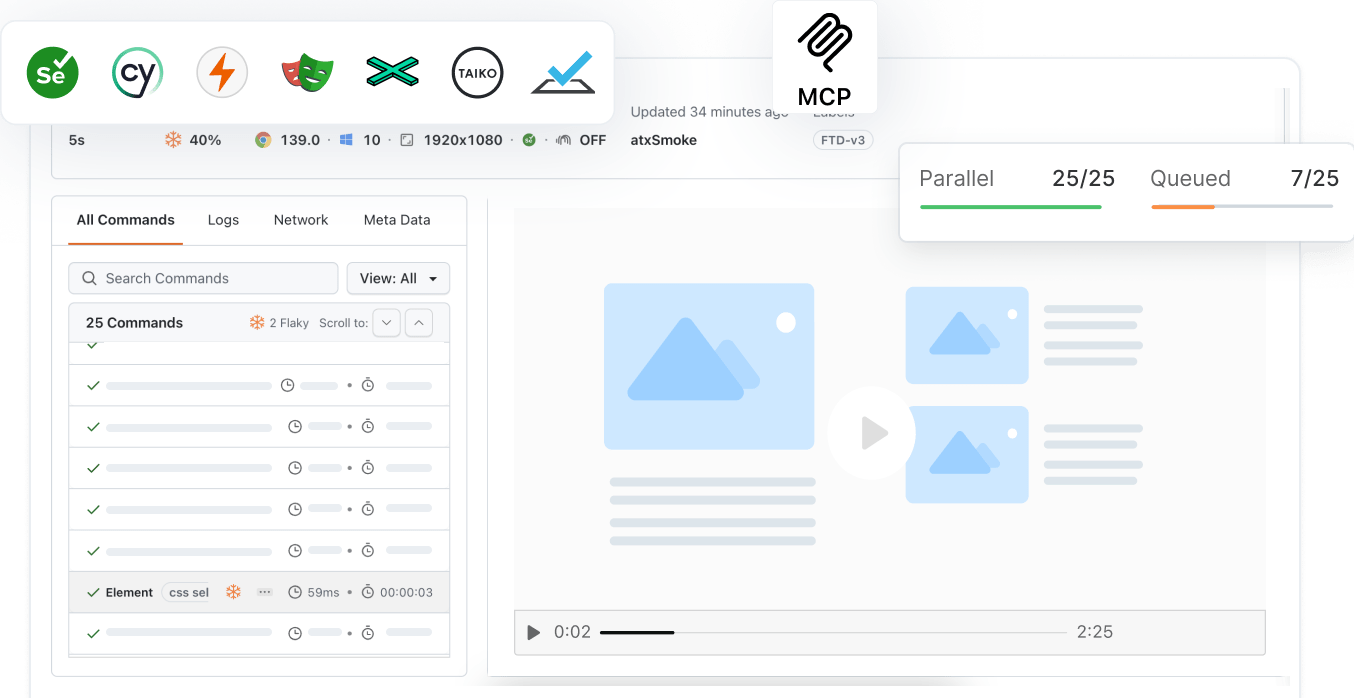Scale Your Automation Testing with AI
Run end-to-end parallel tests & reduce test execution time by 5x
Generate tests scripts using natural language with KaneAI
Accelerate your testing process with Autoheal, SmartWait & RCA

- Automation
- Home
- /
- Learning Hub
- /
- Selenium Protractor
Selenium Protractor Tutorial: Guide With Examples & Tips
Selenium Protractor is an open-source framework for testing Angular apps. Learn to automate tests with Protractor in this definitive guide.
Last Modified on: November 26, 2025
- Share:
Protractor is an end-to-end testing framework developed by Google Developers to support Angular applications. Though it was initially designed for Angular and AngularJS apps, it now supports both Angular and non-Angular applications.
Cross Browser Testing With Protractor & Selenium
In this chapter, we will be looking into details about what we mean by JavaScript test automation framework? Why is Protractor a good fit for test automation? How did it help to achieve cross browser test automation with different browsers?
SEE MORE →Using Selenium Locators In Protractor
Protractor, an Angular JS framework, has many Selenium locators that can be identified by using a specific By method during runtime. In this chapter, we will closely discuss the Selenium locators in Protractor and how we can use locators to interact with the application and further fetch the current running state.
SEE MORE →Handling Mouse And Keyboard Events
Here we'll look at various aspects of how to handle mouse and keyboard actions in the Selenium Protractor framework. Along with a few examples of the frequently used keyboard and mouse actions in Selenium Protractor.
SEE MORE →Handling Multiple Windows
While performing automated browser testing, at times, you might end up in situations where you would need to handle multiple windows in Selenium. In this chapter, we'll show you how to handle multiple windows in Selenium with Protractor.
SEE MORE →Handling Timeouts With Selenium
Often, while performing Selenium test automation, you’ll come across certain scenarios when your test fails because the web page or the web element takes some time to load completely. In such scenarios, the best approach is to wait for the page or the web elements to load completely to avoid any timeout errors.
SEE MORE →Handling iFrames And Frames in Selenium
Do you know Frames are used to split the content into horizontal and vertical splits, while iframes are used to embed content on a web page? While performing Selenium test automation, you'd often come across scenarios where you'd need to handle frames or iframes. In this chapter, we'll look at how to handle frames and iframes in Selenium with Protractor.
SEE MORE →Handling Alerts And Popups
Browsers have native dialog boxes, one that you can show to alert users to these important messages using JavaScript. In this chapter we will be covering how to perform Selenium test automation with Protractor to handle alerts and pop-ups. Read the blog to learn more!
SEE MORE →On This Page
Did you find this page helpful?
More Related Hubs

Start your journey with LambdaTest
Get 100 minutes of automation test minutes FREE!!
